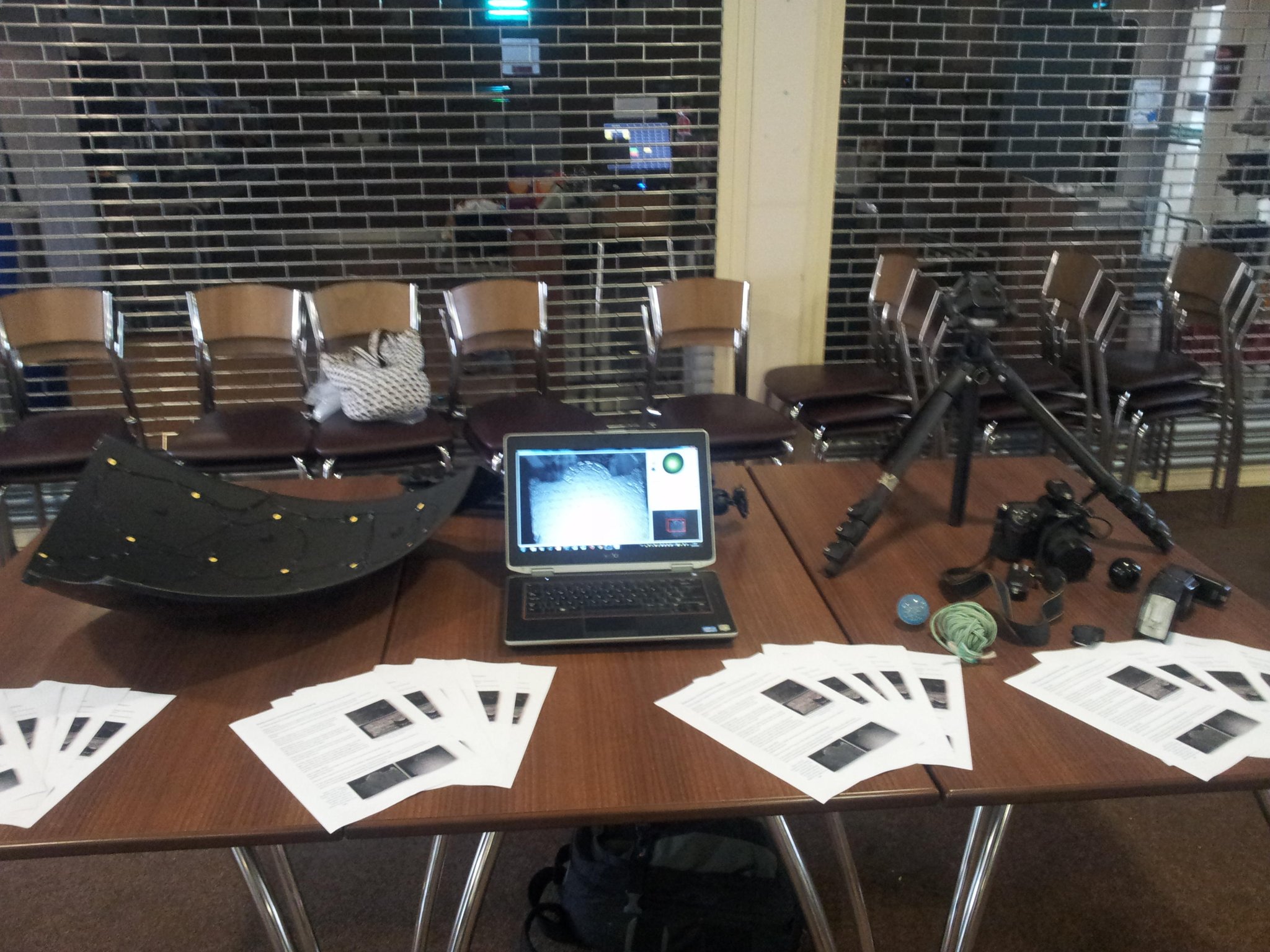Demonstrating RTI for Ceramics
Yesterday I was demonstrating Highlight Reflectance Transformation Imaging (RTI) at the Insight from Innovation conference, a three day archaeological ceramics event hosted by the Ceramics Research Group, celebrating Emeritus Professor David Peacock’s contribution to archaeological artefact studies.
I always find these kinds of events really exciting as they are often a fantastic opportunity to discuss with experts in their field the potential for RTI within the area that they work. Insight from Innovation was no exception. The demonstration was timetabled during the wine reception on the second day, and so I had a good hour or so in which to talk to as many ceramics specialists as possible.
One prevailing idea, mentioned by numerous delegates, was the use of RTI to record pottery stamps.
Interestingly, the Wordle of the conference paper and poster abstracts, produced by the conference committee shows a few dominant terms: ‘Pottery’, ‘Ceramics’, ‘Clay’, ‘Social’. No surprises there. But there is also the word: ‘Visualisation’. Visualisation is one of the strengths of RTI, and indeed of much of the computational photography work that we do here at the ACRG. RTI isn’t just a way to visualise an artefact however, it is also great for recording data about an object. An RTI can provide mathematically derived surface information about an object, such as the ability to carry out specular enhancement on a compiled RTI file, which results in the user being able to see more surface information than was possible with the naked eye.
There are plenty of excellent examples of how RTI does this in this website, so I won’t give any here. But the Wordle of the conference really made me think again about the different uses of RTI. Hembo’s recent post on using Infrared RTI is an example of how the ACRG is experimenting with advancing the reach of RTI for artefact interpretation as well as recording, so do read that if you have five spare minutes.

RTI is actually very difficult to demonstrate as it always looks so technical, even though it is a simple process once you know how. The equipment needed can vary in specification from an iPhone and a torch, to a state of the art digital SLR and high range flash. We always try to bring examples of RTIs with us to demonstrations that show how forgiving the technique is, but also the potential for high quality RTIs that the top range equipment can produce. Here is a photo of the table display that I set up yesterday. I was demonstrating both highlight RTI and the more controlled environment of the RTI dome (a section of which you can see in the image below).

You may notice that the table is covered with RTI leaflets. I’ve taken to always having these available with me at demonstrations, as they’re a good way to pass on the information about getting hold of the RTI builder and viewer software, whilst also giving more details about what RTI can do.
If you’d like to read more about RTI, you can download a copy of the leaflet from our Scribd page:
Reflectance Transformation Imaging Leaflet
We are always delighted to visit an organisation to demonstrate the potential of RTI within a field, so please do contact us if you would like to discuss RTI.
— Nicole Beale
